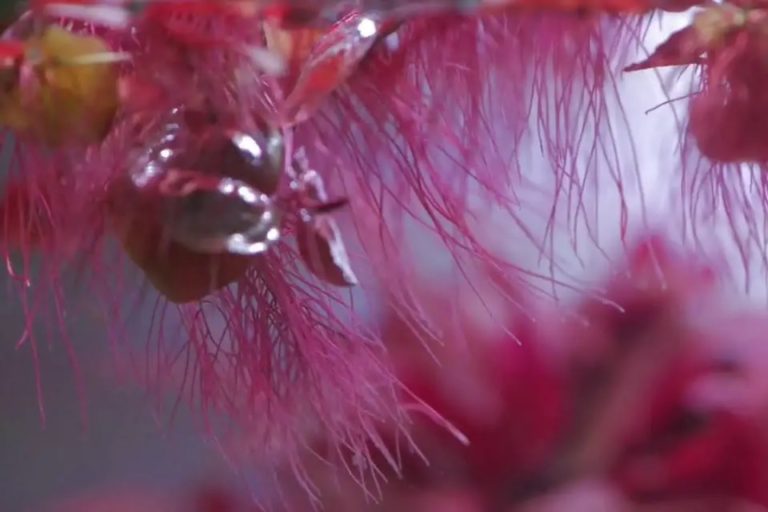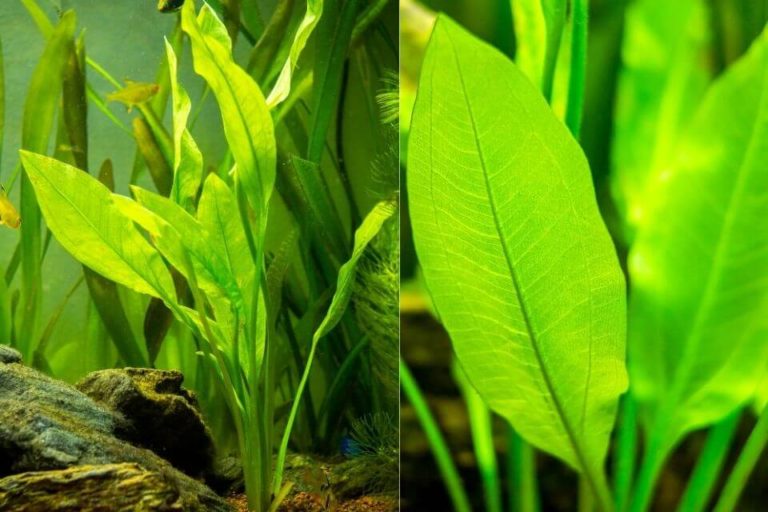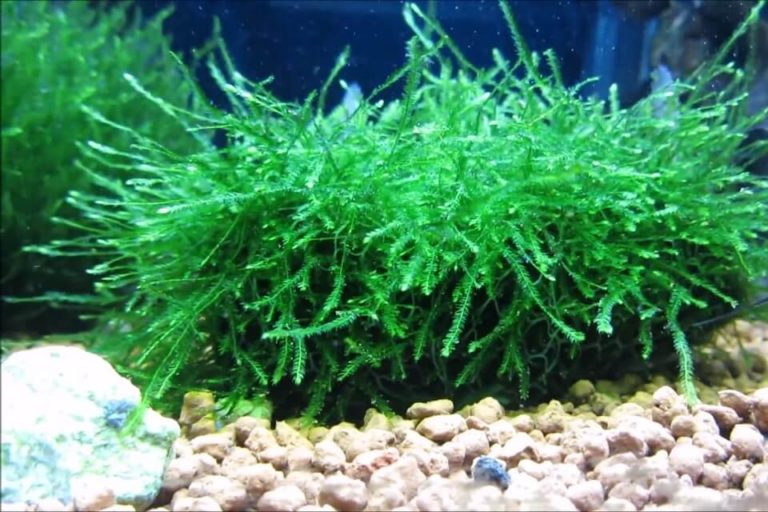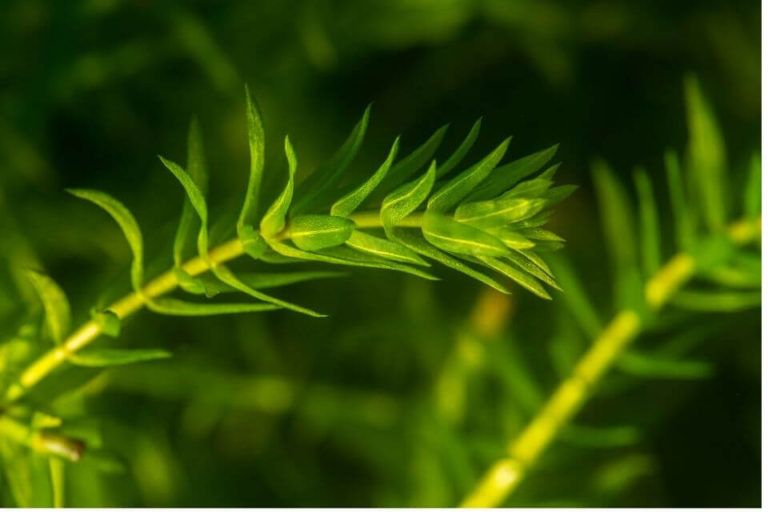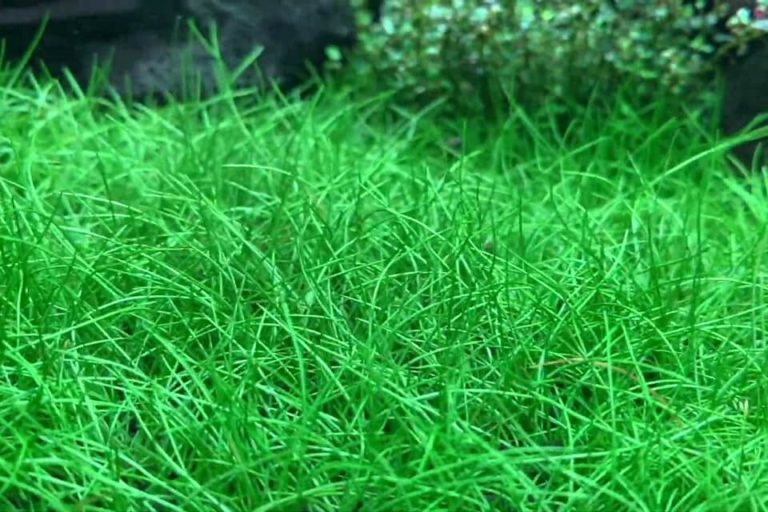Dwarf Sagittaria Care Guide – Benefits, Care, Planting And Propagation
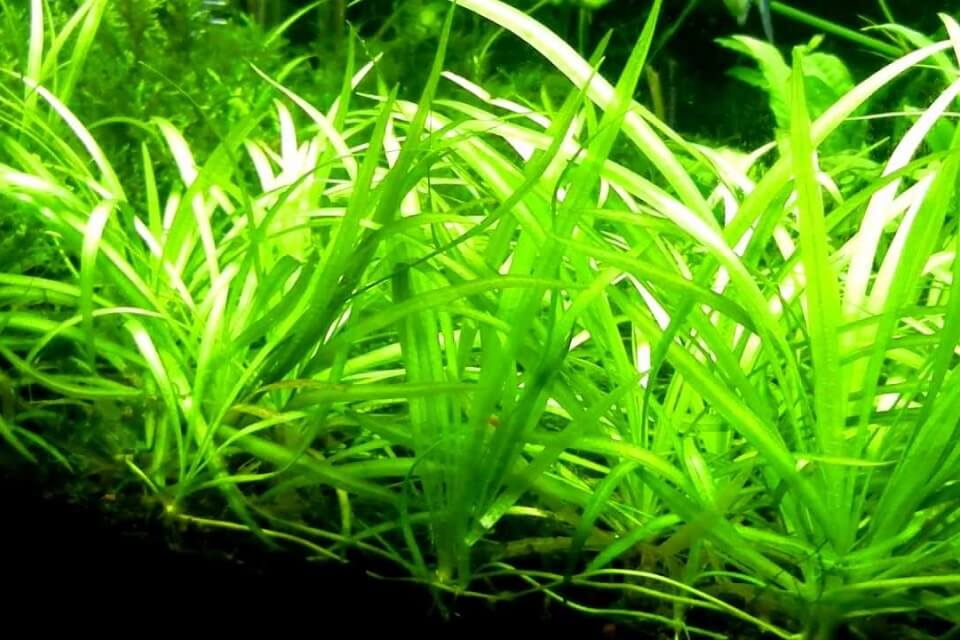
Buy Dwarf Sagittaria on EtsyBuy Dwarf Sagittaria on Ebay
Dwarf Sagittaria is also known as “Dwarf Sag“, a plant originally from South America and Central America. These Aquarium plants are typically planted in the foreground of freshwater tanks for decoration.
Dwarf Sagittaria is scientifically known as “Sagittaria subulata” belongs to the Alismataceae family of plants and grows easily in most water conditions.
The leaves grow in whorls/spirals around a central stem and branches into runners, spreading outwards and towards other parts of the substrate.
Though it is not as commonly seen as well-known aquatic plants such as Vallisneria or Nymphoides indica.
Dwarf Sagittaria is sought after by many aquarists because its grassy appearance lends a more natural feel to the aquarium environment, rather than with bushy plants like java moss or Vallisneria.
Overview of Dwarf Sagittaria Plant
Dwarf Sag is the most popular tropical foreground plant because of its low growth rate, allowing it to fit into any aquarium. It is also easy to propagate and does not require CO2 injection or aquarium fertilizers.
The plants grow in a spiral pattern from a central stem, with typically solid green leaves though some will have red veins, and its foliage may be slightly lighter on the underside.
Roots begin growing from the base of each leaf as they mature and reach downwards towards the substrate. The runners or “suckers” off of these mature roots can be cut away from the main root if desired.
It can then be replanted elsewhere in the tank with plenty of light and nutrients.
Origin and Distribution
Dwarf Sagittaria, a tropical plant, is found mainly in the Amazon River basin in South America and Central America. However, it can adapt to most water parameters and grow successfully indoors or outdoors with proper care.
Though it cannot survive in colder climates, the Dwarf Sag will stay green year-round if kept indoors under artificial lighting. It prefers bright light but not direct sunlight because its leaves burn easily from intense sun exposure.
Benefits of Planting Sagittaria in a Tank
– Low Maintenance
Many people who enjoy keeping aquariums do not like maintaining them so that their tanks stay clean; this can often be quite a tedious task, especially if you have an aquarium with lots of plants in it.
However, this is not much trouble if you have a Sagittaria plant in your tank since they do not require much attention to trimming and fertilizing.
– Very Attractive Addition to The Tank
Another benefit of keeping a Sagittaria plant in your tank is that they are very attractive plants and can be used as decoration. The bright green colors that they have to look aesthetically pleasing complement other aquarium plants very well.
Another thing to note about this particular plant is that it has both long and short growing seasons, meaning that you will often get blooms on these plants throughout the year, even though some species will bloom more than others.
– They are Very Responsive to CO2
Being able to grow faster in tanks with high levels of CO2 does not just mean getting a head start on all the other plants.
It also means is getting more out of your lighting since higher growth rates will also mean the Sagittaria plant can utilize all of your aquascaping lighting spectra more efficiently.
Therefore, you should look into getting a CO2 system if you want to help this particular plant get even better results in your tank.
– Effective at Removing Nitrates from The Water
Another benefit that has been scientifically proven is that Sagittaria plants are very efficient at absorbing nitrates. So they have been known to be used as part of natural aquarium filtration systems.
Especially if they are kept with other types of aquarium plants which can then benefit from any nitrate-rich parts of your tank’s water. On top of this, it has also recently been discovered that when these plants absorb nitrates.
They do not just immediately deposit them on the substrate or in other parts of your tank’s water; instead, they save these nitrates for when they need to grow.
Appearance, Size, and Growth Rate
Sagittaria has whorled leaves and red veins running through its foliage; typically, the straight-running leaves will form a spiral pattern around a central stem.

Its roots emerge from the base of each leaf at its mature stage; these roots can be cut away and replanted elsewhere if desired. It stays green year-round, unlike some other aquatic plants that turn brownish during the winter months.
Sagittaria has a moderate growth rate, and it can grow up to 30cm tall if planted in the right conditions.
Dwarf Sagittaria Care
Though it is typically not fussy about its care, certain practices will help keep dwarf sag healthy and growing well indoors or outdoors.
In terms of substrate, standard aquarium gravel or any stones/pebbles different from limestone or other rocks work just as fine for holding this plant. Having an iron-rich substrate (like laterite) is beneficial.
It contains many important trace minerals for plants; however, adding nutrients such as liquid fertilizer to the water column is also a good idea because aquatic plants need these.
CO2 injection is not necessary to grow dwarf sag, but it is beneficial to other plants, especially heavily pruned.
– Tank Size
Dwarf Sag may be kept in aquariums ranging from 10 gallons up to 55 gallons and above; however, the larger the tank size, the fewer plants are needed for a successful aquascaping project.
Sagittaria can also be grown as a pond plant or even outdoors with soil, provided enough sunlight and nutrients available in these environments.
– Tank Setup
It does best when planted in an appropriately lit aquarium with CO2 injection. If available, soil can be used as a substrate for outdoor/pond planting; otherwise, gravel works just fine indoors or out.
The water needs to be acidic and slightly alkaline to remain in the pH range of 6.0 to 7.5. Because of this reason, aquatic plants need to be planted on a substrate rich in iron or laterite and with plenty of peat moss mixed in.
– Water Parameters
Temperatures should remain around 70 degrees Fahrenheit (21 degrees Celcius) during active growth. Sagittaria can adapt to most normal aquarium water conditions.
Although soft water is preferred over hard water because it contains less dissolved minerals (such as calcium). Dwarf sag tolerates low light conditions but grows best under medium to high lighting outdoors on land or beneath bright lights indoors within the tank.
It does not do well in warmer temperatures and prefers slightly cooler climates than most other tropical aquarium plants.
– Lighting Requirements
Sagittaria generally prefers bright lighting; however, as long as it is sufficient to keep it healthy and not too strong (especially in direct sunlight), it grows just fine even under low-light conditions.
These plants grow best when kept at around 70 degrees Fahrenheit with moderate light levels.
– Co2 And Fertilizer
Since Sagittaria needs nutrients for growth, CO2 injection into the water column can provide these in a form that aquatic plants use through a chemical process called photosynthesis.
Otherwise, liquid fertilizer may also be added to the water column or soil of outdoor/pond planted plants every few weeks, depending on the brand used and how much nitrogen, phosphorus, potassium, iron, or other trace minerals are contained in the fertilizer.
How To Plant Dwarf Sagittaria?
When planting Dwarf Sag, make sure to use soil rich in iron or laterite and peat moss (or just about any good-quality potting mixture). The best time of year to plant is during spring through mid-summer when temperatures are cooler outdoors.
However, it can be planted throughout the year with proper care, especially during the winter months when indoor water temperatures reach around 20 degrees Fahrenheit (-6 degrees Celsius).
Any high-quality aquatic plant fertilizer may be used for growing these without a problem. Sagittaria has a very low risk of uprooting itself due to being planted too deep, so long as its crowns remain above the substrate level.
It generally takes two to three months to grow roots after initially planting them in the substrate. Sagittaria may be grown from seed, but doing so can take up to five years before they are fully mature; instead, it is better to buy cuttings.
When planting outdoors, make sure to include a few stems, among other plant species, for propagation purposes. Planted in soil, Dwarf Sag grows best when allowed to develop its roots for a few months before being transplanted into the main aquarium.
Pruning And Trimming Dwarf Sagittaria
Dwarf Sagittaria plants should be pruned and trimmed only when necessary, as their leaves can grow up to 2 feet long when you place them in a larger tank.
If you trim the leaves, make sure to leave at least 1 inch of a leaf so that the newly cut areas can heal before they are again exposed to water (which promotes rot).
Propagation
Dwarf Sagittaria plant propagation can be performed by vegetative means or sexual means. Vegetative propagation is when a part of the plant itself is used as fertilizer for new growth.
The most commonly used vegetative propagating parts are rhizome and tubers. Rhizomes grow under or just above ground level, while tubers usually grow underground like potatoes or dahlias.
Sexual propagation lets you experience reproductive success when pollinated plants produce seeds in return for flowers having both male and female parts.
Pioneer species like frogs, toads, or dandelions (which are often weeds) usually propagate with sexual means as the wind carries their pollen from one plant of the same kind to another.
Compatible Tank Mates
Dwarf Sagittaria are very tolerant fish plants that can be kept with almost any water-dwelling animals, including smaller cichlids and other freshwater tropical community tank mates.
Suitable fish species that are more compatible are:
- Dwarf Gourami
- Tiger Barb
- Rosy Barb
- While Cloud Mountain Minnow
- Galaxy Rasbora
- German Blue Ram
- Chili Rasbora
- Zebra Danio
Frequently Asked Questions (FAQ)
– Where Dwarf Sagittaria Plants Are For Sale?
Ever wonder where to find dwarf Sagittaria plants for sale? The best place to get Dwarf Sagittaria plants is usually in person at your local fish store.
The only online site that I have been able to find selling them (that are cheap enough) is Ebay.com or Etsy.com, and they do sell them but only rarely.
So if you’re looking for a good deal on dwarf Sagittaria plants, visit your local garden center or hobbyist club’s plant sales.
However, it should be noted that there is another way to get your hands on some very nice-looking adult-sized Dwarf Sagittarius without having to pay not more than $10 for a few plants.
You can even grow these out yourself from seed and harvest the seeds again to start the process all over again.
Buy Dwarf Sagittaria on EtsyBuy Dwarf Sagittaria on Ebay
– Is Dwarf Sagittaria Easy To Grow?
Dwarf Sagittaria are low-maintenance aquarium plants and are easy to grow. They require bright indirect sunlight (low lighting), provided by standard aquarium hood lights with compact fluorescent bulbs or LED light fixtures.
It can be easily grown in 10 to 20 gallons tanks. It is also recommended to add fertilizer tablets for plants every other week and regular water changes to ensure the healthy growth of dwarf Sagittaria.
– How Fast Does Dwarf Sagittaria Spread?
Dwarf Sagittaria grows in either a rosette-type fashion or spreads runners if its substrate is rich enough to support this type of growth. It cannot be classed as invasive but can take over slowly and eventually overtake other less hardy plants. This plant is worth propagating by division since it spreads so easily and quickly.
– How Tall Does Dwarf Sagittaria Get?
This aquatic plant species grows anywhere from 3 inches tall in submersed conditions up to 18 inches tall when grown emersed (above the waterline). Height depends on light levels, CO2 availability, nutrient levels, etc., and whether it is submersed vs. emersed.
– Can Dwarf Sagittaria Grow In Gravel?
Yes, this species of aquatic plant can grow in gravel without any issues or difficulty. If planted correctly, it should not cause any problems with a gravel substrate. As usual, make sure that the conditions are suitable for your plant, i.e., CO2 levels, nutrients, etc., before planting it in any substrate, though.
– Can You Float Dwarf Sagittaria?
The answer is yes. Dwarf Sagittaria, also known as pygmy arrowhead, is a perennial plant grown in aquariums and ponds. As its name implies, it is very compact in both size and form. It is considered an easy to grow plant even though it has special requirements that need to be met to grow healthily.
In nature, the roots of this plant are constantly immersed in water because they are found along the banks of slow-moving rivers and streams. In these environments, the water flow is not too strong nor fast, making them ideal habitats for most plants but especially those with shallow and fragile root systems, such as the dwarf Sagittaria. These plants can also be found in marshlands with slow-moving currents.
Aquariums and ponds are similar to rivers and streams, but a few main differences need to be taken into account so you can successfully grow dwarf Sagittaria.
– Can Dwarf Sag Grow Emersed?
Yes, it can be grown emersed without any problems or difficulties. Ensure that you avoid overwatering this species when grown emersed, though (i.e., not too moist). You also need to ensure plenty of light, and CO2 levels are maintained too as if it were submerged/water plants instead (i.e., nutrients, etc.). There are no additional needs for dwarf Sagittaria to grow emersed over submerged conditions and vice versa; they require different water conditions in terms of temperature, lighting, nutrient availability/content, etc.
– Is Dwarf Sagittaria A Root Feeder?
No, this species of plant is NOT a root feeder. CO2 levels etc. should still be maintained for this species if looking to grow it in a planted aquarium or biotope, though as usual (i.e., do not let nutrient levels significantly drop and support all the basal growth that comes from this aquatic plant). Suppose you’re going to have a low-light tank and low CO2 levels. In that case, you could classify it as submersed plants rather than emersed plants since there are no benefits when growing dwarf Sagittaria emersed with regards to lighting and CO2 availability/content compared to maintaining it in submerged conditions. This means that it can be planted without worrying about causing any problems concerning the growth and spread in the tank.
– Does Dwarf Sagittaria Need Co2?
No, this plant species does not require CO2 levels to remain healthy, but you’ll find that all standard aquatic plant needs are met when trying to achieve a well-planted aquarium/biotope. This includes optimum lighting conditions (i.e., bright light) and nutrient availability too (not just nutrients for plant growth like nitrogen [N], phosphorus [P], etc.): These are needed by all plants for photosynthesis and other metabolic processes which occur within a plant’s cells – including CO2 (carbon dioxide). Plants need these mineral salts as part of their metabolism so that they can grow and remain healthy.
Final Thoughts
You can see from the above care guide that many factors affect how well dwarf Sagittaria grows and spreads in an aquarium. It is very easy to propagate by division, so it slowly takes over other plants if not kept under control. This plant does not require CO2 levels (although it may benefit from them). It is suitable for planting in any substrate, including gravel, without the worry of spreading too far or causing problems with growth/spread since it is a non-invasive species of aquatic plant. It also doesn’t need light per se to spread either, only the usual limiting factors as with most aquatic plants such as nutrients, etc., meaning that you don’t need to go out and buy specialized aquatic plant grow bulbs for this aquatic plant either. Just place it near the top of a tank with suitable lighting and nutrient conditions (i.e., good nutrient levels available in the substrate/water column) and watch it take over slowly but surely. Make sure that you have enough surface space on top of the water if growing it emersed though since both low light levels along with not providing adequate nutrients when growing it in this manner can cause dwarf Sagittaria to melt away, so it doesn’t look attractive at all to the eye, unlike submerged plants which don’t need lots of light or nutrients. And, as usual, CO2 levels should be high/maintained too for good growth.


